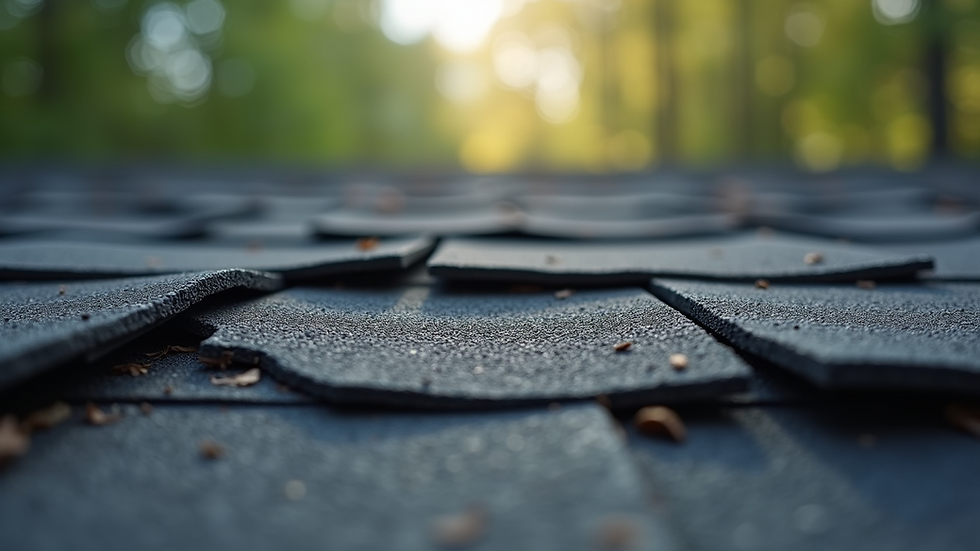What to Check for After Severe Weather Hits Your Roof
- Proway Exteriors
- Jun 3
- 3 min read
Severe weather can wreak havoc on your home, especially on the roof, which is your first line of defense against the elements. After a storm, it’s crucial to assess any potential damage to ensure your shelter remains safe and secure. Here’s a detailed guide on what to check for once the storm has passed, helping you keep your roof in top shape.
Understanding the Importance of Storm Inspection
Storm inspections are essential because they help identify any damage that may not be immediately visible from the ground. Wind, hail, and heavy rain can create issues that, if left unchecked, lead to costly repairs or even structural failure. According to the National Roofing Contractors Association, regular inspections can extend the life of a roof by up to 20 years.
Image Placeholder

Roof Materials: What to Look For
Different materials can sustain varying types of damage. Whether your roof is made from asphalt shingles, metal, or tiles, knowing what to look for can help you determine the severity of any issues.
Asphalt Shingles: Check for missing or curled shingles, as well as granule loss, which could expose the underlayment.
Metal Roofs: Look for dents, rust spots, or loose panels. Metal is durable but can still be compromised by severe hail.
Tile Roofs: Inspect for cracked or displaced tiles, which can lead to leaks if not addressed promptly.
Image Placeholder

Inspecting for Water Leaks
Water leaks are one of the most common problems following harsh weather. Even a minor leak can lead to serious issues such as mold growth and structural damage. Here are the steps to check for leaks after a storm:
Attic Inspection: Begin in the attic, where you can spot signs of water intrusion. Look for stains, discoloration, or damp spots on the insulation or wooden beams.
Ceiling Checks: Inspect the ceilings of your home for any visible water stains or sagging, indicating a potential leak from the roof.
Exterior Walls: Check for peeling paint or bubbling in the walls adjacent to the roof. This could signify water entering the structure.
Image Placeholder

Assessing Structural Integrity
After a severe storm, it is essential to ensure that the structural integrity of your roof remains intact. Here’s how to do it:
Look for Sagging: Stand back from your house and visually inspect the roofline. If you see any sagging areas, this might indicate structural issues that need addressing.
Gutters and Downspouts: Ensure your gutters and downspouts are clear and free from debris. Blocked gutters can cause water to pool on the roof, leading to further damage.
Flashing: Inspect the flashing around chimneys, vents, and skylights. Loose or bent flashing can result in leaks, so any signs of damage should be repaired promptly.
Post-storm inspections are a great time to consider a thorough storm damage inspection to ensure no issue is overlooked.
Safety Precautions Before You Begin Your Inspection
Safety should always be your top priority. Here are some tips to consider before heading onto your roof:
Wait for the Storm to Pass: Ensure there are no lightning risks before climbing onto the roof.
Use a Stable Ladder: Always use a sturdy ladder to gain access to your roof, ensuring it is placed on a flat, stable surface.
Wear Safety Gear: If you climb on the roof, wear non-slip shoes and a safety harness if it’s steep.
Seek Professional Help: If you feel unsafe or unable to assess the damage, consider hiring a professional roofing expert.
When to Call a Professional Roofer
While you can perform an initial inspection and check for obvious damage, some situations will require the expertise of a professional. You should consider calling a roofer if:
You suspect significant underlying issues.
There are extensive leaks or sagging areas that you can’t assess.
You are unsure about the structural integrity of your roof.
Hiring a professional can provide peace of mind and ensure comprehensive storm damage inspection, using their expertise to evaluate and remedy any concerns.
Final Thoughts on Roof Storm Inspections
After severe weather, taking the initiative to inspect your roof can prevent further damage and ensure the safety of your home. By understanding what to look for and being proactive, you can protect your investment and maintain the integrity of your home. Regular inspections, especially following storms, are a key part of responsible home maintenance. Don’t underestimate the importance of a good storm inspection — your roof works hard, and it deserves proper care and attention.








Comments